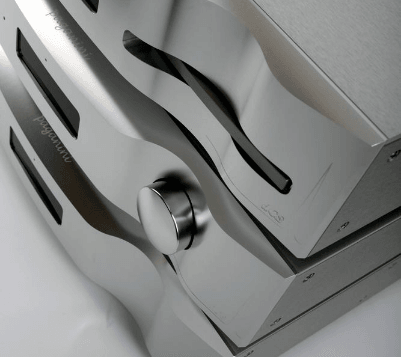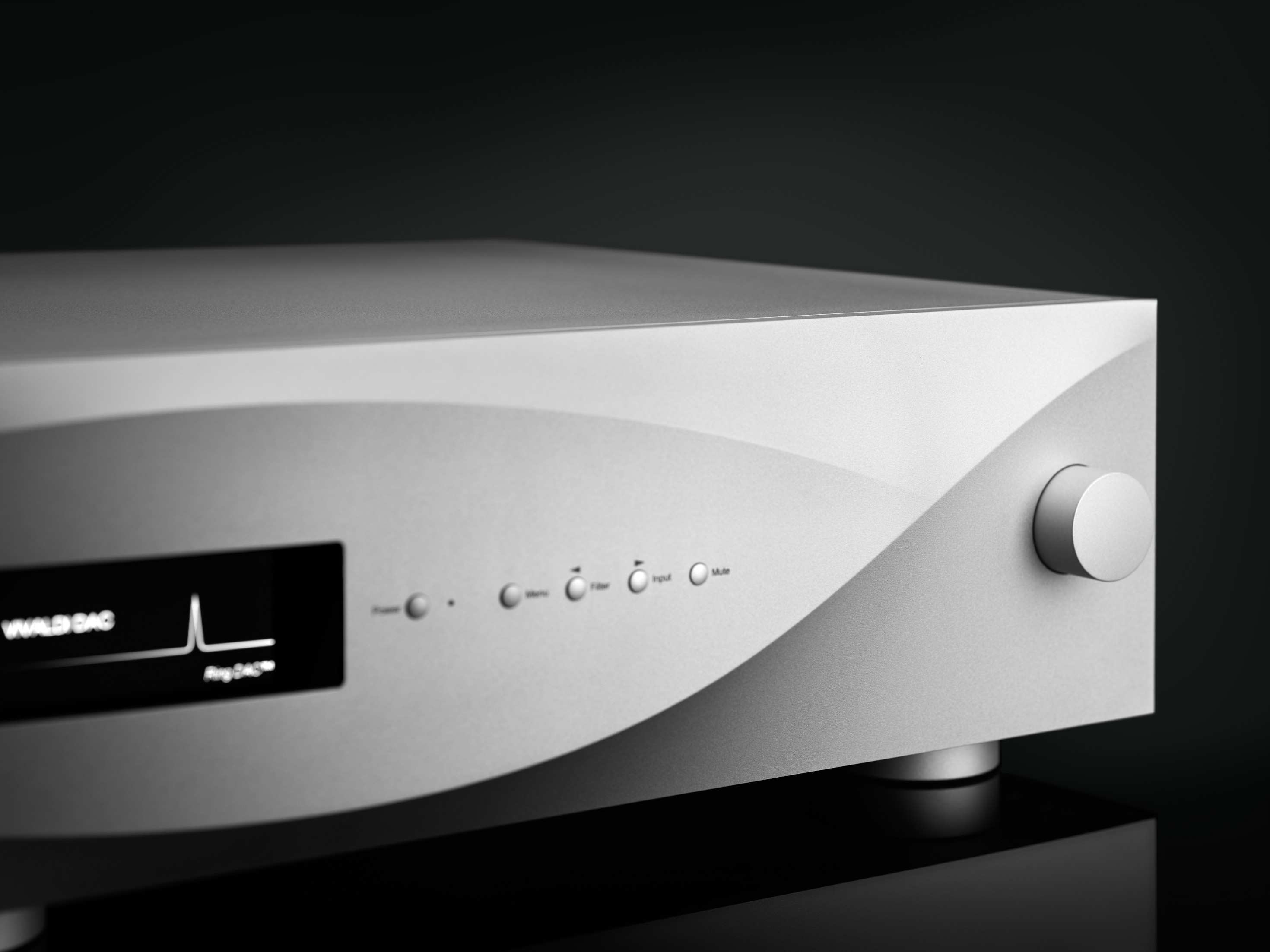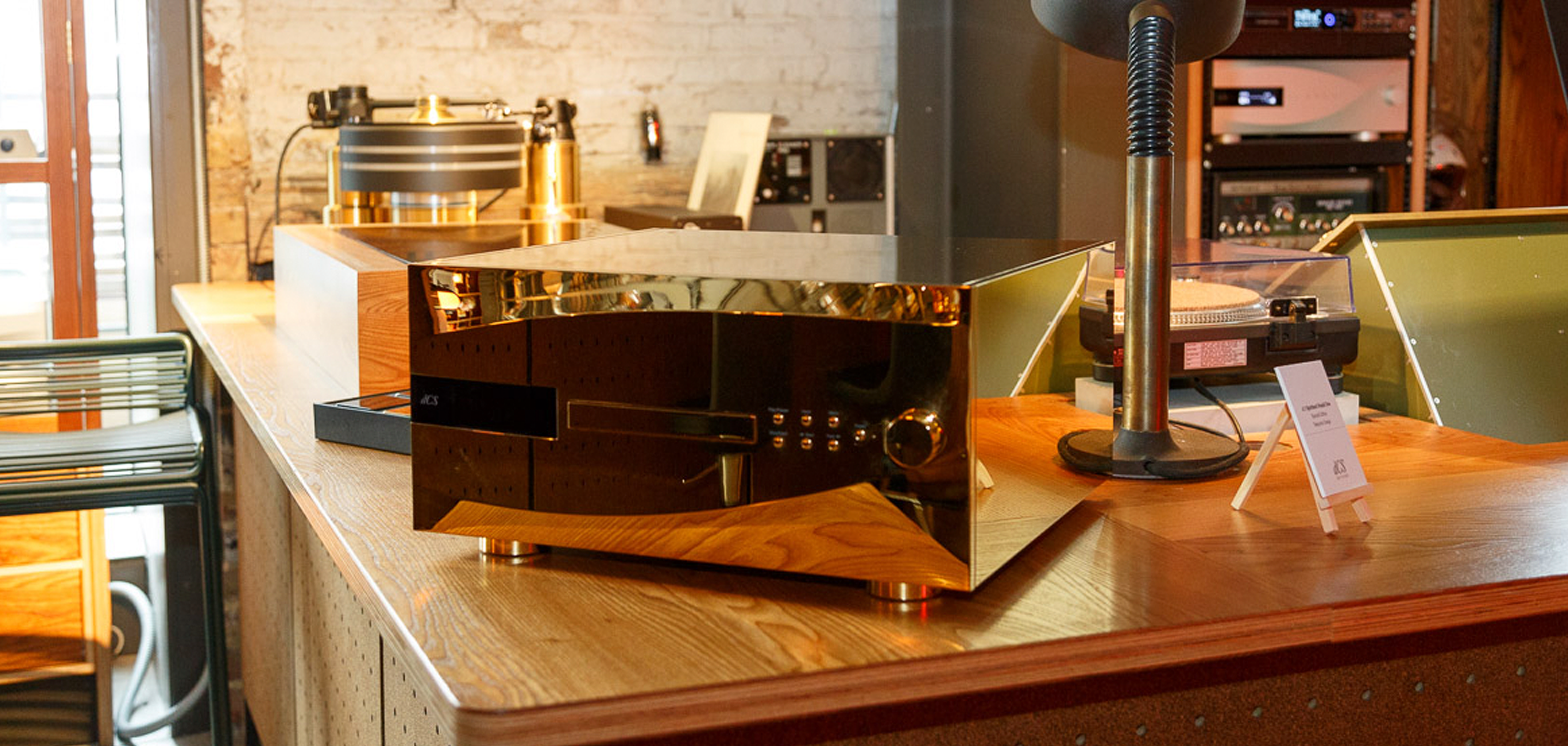Chris Hales and Andy McHarg reflect on 25 and 30 years at dCS
This year marks Product Development Director Chris Hales’ 25th anniversary at dCS and Technical Director Andy McHarg’s 30th. Here they share some of their highlights from the past three decades and discuss how their work has evolved
Tags: Design & Craft, Technology & Innovation,Andy McHarg joined dCS in November 1993, after graduating from the University of East Anglia with a degree in Applied Computing. At the time, dCS was an engineering consultancy known for its expertise in signal conversion. Working from St John’s Innovation Centre in Cambridge – a campus built to house local startups and tech firms – it had created bespoke digital converters for aerospace and aviation companies and collaborated with Britain’s Ministry of Defence to design radar systems for naval jets. Alongside this, dCS’s team had begun exploring the nascent world of digital audio, designing a 24-bit ADC for use in professional recording studios in 1989, but its main focus was providing specialist engineering support to clients.
Andy was brought in to provide IT support and within a few months, was working on the development of dCS’s first audio DAC – the 950 – programming code for its microcontroller.
“When I joined, we were doing a lot of work for the M.O.D. and the BBC. We had an ASIC design department, but the professional audio side of things was still quite small,” he explains.

Chris Hales joined a few years later in November 1998. A keen musician with a degree in electronics, and a love of bass guitar and prog rock, he had spent several years in audio, working on a range of products from power amplifiers to mixing consoles. He was initially recruited to run tests on dCS software: “At the time we would make quite regular software updates and often adding a new feature somewhere would cause something to break somewhere else … so I was brought in to run tests and keep that under control,” he says.
“One of my first projects was working on the Elgar [dCS’s first consumer DAC]. This was also around the time that SACD was starting to [appear] and systems were starting to record DSD, so I had [some involvement] with that, but the focus at that time was mainly making sure the software worked.”

From Barry Manilow to the BBC
Under the direction of founder Mike Story, dCS had developed a succession of transformative products and technologies in its first decade, from the first 24-bit audio DACs and ADCs to the 972 Digital to Digital Converter – a device that led dCS to discover and pioneer an effect known as upsampling – and of course, the Ring DAC. It was an exciting and innovative business, but Andy and Chris recall a high-stress, high-pressure environment. Developing nascent technologies is an expensive and high-risk endeavour and the nature of their work meant there was no room for mistakes. Andy and Chris recall finding ways to bring some lightness and humour to their days to offset these pressures – such as singing Barry Manilow songs and 1980s power ballads on their route to work…
“Chris used to give me a [ride] to work every day because he lived close to me. The heating in his car never worked, so it was freezing cold, and we used to drive along the [motorway] singing Bermuda Triangle and Copacabana...” remembers Andy.
Over the years, they moved into more senior roles on key projects – Chris on the electronics side and Andy on software. One of their first major undertakings as lead engineers was completing a commission from the BBC to create over 120 bespoke converters and a custom clocking system for their national radio centre in London.

“Every BBC radio broadcast still goes through two pieces of dCS equipment”
As Andy points out, it was a hugely ambitious project, both in scale and complexity. Designing over 100 digital processors to support continuous broadcast is no easy feat: the team had to ensure equipment would provide an excellent performance and keep running in the event of technical issues or national emergencies. The supporting clocking system had to operate with absolute precision, allowing listeners to keep time via the famous pips which are broadcast at the start of each hour.
The project presented several unforeseen challenges but after several months and countless visits to Broadcasting House, Andy and Chris had devised a system that is still in use almost three decades later. “It’s all still there. Every BBC radio broadcast goes through two pieces of dCS equipment, which is astonishing really,” adds Andy.

A new direction
The BBC commission was dCS’s last major consultancy project. In 2004, Mike Story left the company. Andy was appointed Technical Director and Chris became Product Development Director. Together with newly appointed MD David M Steven, they took on leadership of dCS and set out a new vision for the company’s future. Following the success of the Elgar, they decided to step back from creating professional audio products and focus their efforts on developing high-performance playback systems for the home – bringing their innovations out of the studio and into listening rooms and living spaces around the world.
The first product released under this new direction was the dCS Scarlatti. “For me, Scarlatti was a huge milestone,” Chris explains. “It was the first thing we did after Mike had left and it very much embodied the change of direction we were trying to make, towards a more commercially focused, customer-centric approach.”
As Chris points out, one of the main objectives with Scarlatti was to provide a more streamlined experience for listeners. Whilst industry professionals were used to working with complex equipment and needed the maximum range of available functions and features, most audiophiles and music lovers wanted a product that performed brilliantly in their homes whilst also being relatively straightforward to use. As a result, there was a desire with Scarlatti’s design “to get rid of [unnecessary] bells and whistles and make something that solidly did its job very well,” says Chris.

Paganini and a new design language
The product was a success, winning numerous awards and receiving positive reviews. Soon after its release, Chris and Andy began developing the Paganini DAC with mechanical designer Ray Wing – a project that Chris counts among his personal highlights from the past 25 years.
“The Paganini was the first product where we really started to find our feet where the industrial design was concerned,” explains Chris. “It was such a step forward to what we’d done previously and we were very proud of the way it looked and the way it performed. We also had a lot of fun doing it.”
“It was stepping away from the legacy of Elgar and all those things which had come before”
“I think the Scarlatti’s industrial design very much harked back to the Elgar’s – it was deliberately very chunky and heavy weight but to my eye, that made it look very industrial,” he adds. “With Paganini and Puccini, we introduced much more elegant, sculptural products. It was stepping away from the legacy of Elgar and all those things which had come before, and it brought something fresh and new which for us worked really well.”

Vivaldi: a bold vision for the streaming era
This vision to create elegant state-of-the-art products was pushed further with the creation of the dCS Vivaldi series, released in 2012. Comprising a dedicated DAC, Upsampler, Master Clock and CD/SACD Transport, Vivaldi was conceived as a future-proof audio system that could support a myriad of use cases and audio formats, while delivering the highest levels of audio performance.
Andy and Chris set out to improve linearity, crosstalk and jitter performance, at the same time as replacing FireWire as the interface between dCS components. Many rounds of prototypes followed, as well as detailed discussions between Andy, Chris and MD David J Steven on the system's potential future.
“By the time we came to work on Vivaldi we had some pretty solid technologies under our belt – we'd been continuously working on and refining our core circuitry since Scarlatti, and we’d also had our first foray into computer audio with the Debussy, so we were starting to get an idea of what we wanted the new system to look like technically,” explains Chris. “We took the opportunity to review and redesign the key circuit boards. We made some significant changes to the Ring DAC board and, as is often the case, in reviewing the prototype performance, we targeted some additional performance enhancements to make. It all took longer than we expected, of course, but it was gratifying to feel we could do an extra iteration of a board to get even better performance.”
Vivaldi was the first dCS product to feature a network interface: “That was entirely new territory us, and not without its challenges and frustrations, but it did give us a product that was probably ahead of its time,” explains Chris.
“It was an entirely new approach and, in many ways, a fresh start”
The system was developed at a time when many listeners remained sceptical about streaming’s potential. The decision to include a network interface, and design Vivaldi with streaming as well as disc playback in mind, proved an astute one.
Andy and Chris led the design of Vivaldi’s hardware and software, developing a flexible, modular framework that provided almost unlimited potential for upgrades. They created new innovations and platforms that allowed us to enhance sound quality and provide even greater levels of transparency, clarity and musicality for listeners.
“Vivaldi was one of the most satisfying projects I’ve worked on because it was an entirely new approach and, in many ways, a fresh start,” says Andy. “Chris had developed some new boards, and [he jokes] cleverly included some obscure hardware bugs for me to find…. He’d also kindly put FPGAs on the analogue board, so there were more programmable devices there for me to deal with, too. I remember working some pretty long days around release time, but it was really rewarding to see it all working so well and looking so good. Of course with our philosophy of upgradability a product is never really finished, but I remember sitting back and thinking we’d done a pretty good job.”

Over a decade on from its initial release, the Vivaldi continues to win awards for its performance and design. (dCS received a prestigious Queen’s Award for Innovation in 2019, in recognition of technologies developed for the system, and the latest-generation Vivaldi APEX received five industry awards in 2023 alone, including a Joint Overall Product of the Year award from Stereophile.) Chris and Andy have continued to enhance its capabilities throughout the past ten years, delivering major hardware and software upgrades from 2.0 to APEX to ensure it remains truly state-of-the-art.
Growing the dCS team
Alongside developing Vivaldi and subsequent upgrades, they have grown the dCS engineering team and led the development of three further product families: Rossini, Bartók and Lina. They’ve also continued to improve and refine core dCS technologies such as the Ring DAC and create new innovations such as dCS Expanse – a proprietary method of headphone optimisation that provides a more natural and immersive alternative to traditional crossfeed.
As Directors, a large part of their work now involves sharing their knowledge and supporting other dCS engineers to develop new ideas. Over the past decade, the team has expanded to include new electronics and software engineers, plus product test and certification specialists – a talented group of people with diverse skill sets and industry backgrounds.
Creativity and the key to success
Andy and Chris are firm believers in creating a collaborative environment where people aren’t afraid to make mistakes. “What I want to do is create an environment where everyone is individually comfortable and can be maximally creative,” adds Chris. As many leaders would attest, trying, failing and learning is a vital part of the product development process and a necessary part of developing truly innovative or groundbreaking work. “I’ve seen environments where [if something goes wrong], the key thing people set out to prove is that it’s not your fault but that’s not a very constructive or comfortable way of looking at things. If there’s a problem, we view it as ‘no-one meant for that to occur, so let’s work together to fix it’,” adds Andy.
Remaining at the forefront of any industry for a sustained period is no easy feat. It requires skill and a comprehensive knowledge of the field, along with continuous learning and development. Andy and Chris believe that continued success in their disciplines comes down to a thorough, considered and holistic approach – finding the best solutions to the problems at hand, rather than chasing a narrow set of measurements or objectives which could lead to excellent results in one area, and suboptimal outcomes in another.
“Sometimes it's just a question of tenacity”
"One thing that Mike [Story] really enforced was the importance of rigour,” explains Chris. “Engineering is about problem solving – it’s about identifying what you need to achieve and working towards that. To know you’ve solved the problem, you have to understand what the problem was, why [something] wasn’t working and only then can you be sure the job is done."
"Sometimes it’s just a question of tenacity … saying ‘right, I’m going to fix this, I’m going to solve this, whatever it is’. If you want an exceptional result, you have to put the effort in and understand that there aren’t shortcuts," he adds.
Andy believes it also comes down to remaining focused on personal progress and innovation, rather than fixating on what others are doing. "We aren’t interested in doing what others have already done, and we are always focused on how we can make our [products and technologies] better.... You have to keep that mindset, I think."
“Another thing that I think is important is a willingness, or an openness to admit when you’re wrong,” adds Chris. “We do what we do with the best of intentions but if at any point we figure out that we should have done something else, then we’ll be the first to embrace that.... I think that lack of dogma is hugely important, because it doesn’t tie you into a particular route. You’re free to take the route that’s going to give you the best results which is what really matters.”
Imparting wisdom (and humour)
Through three decades of collaboration, Andy and Chris have developed a close working relationship. The audio industry has changed dramatically since their early days at dCS but throughout all these changes, they have each remained focused on finding innovative solutions to problems, achieving the highest levels of performance, and building outstanding products that improve people’s lives.
In their roles heading up the dCS engineering team, they’ve made a conscious effort to create an environment where staff are challenged and supported. Alongside this, they continue to drive research and development in partnership with colleagues across the business and are always exploring how our technologies and products can be further improved.
They no longer take part in daily Manilow singalongs on their route to work, but they still find plenty of ways to share moments of levity with their team members and colleagues, whether through their choice of music when testing products, or their keen wit and dry sense of humour.
“When we ostensibly took over leading R&D, there was certainly a conscious decision to make it a pleasant and light-hearted environment," adds Chris.
We’ll be delving more into dCS’s design and engineering philosophy in 2024 – subscribe to our mailing list to receive the latest content straight to your inbox.












